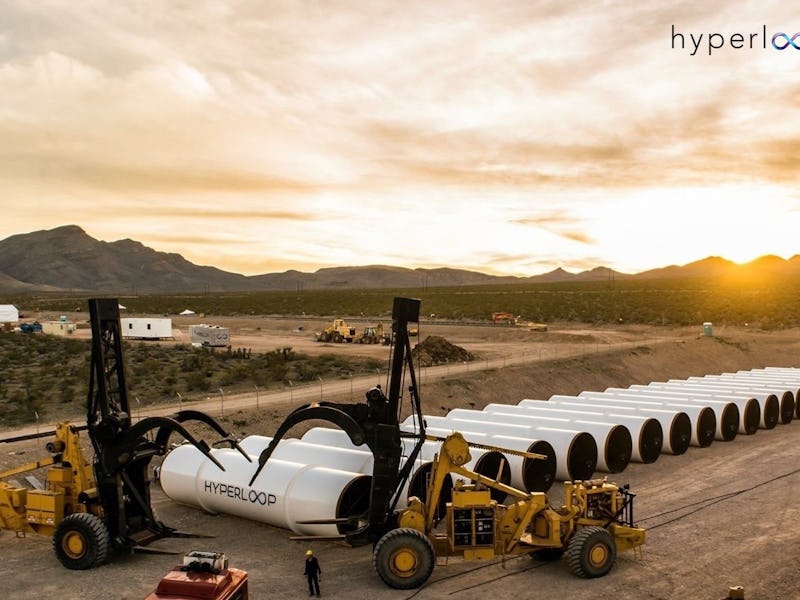Hyperloop One to Conduct First Test of Its Propulsion System in Las Vegas Desert
"The hyperloop is real. It's happening now."

Hyperloop Technologies, Inc. has officially rebranded itself Hyperloop One, a clear sign that it considers itself the leading company trying to produce an operational hyperloop. The announcement at a press conference on Tuesday lent an air of expectation to the first public test of a hyperloop propulsion system, which Hyperloop One will conduct Wednesday on its test track in the Nevada desert. CEO Rob Lloyd also declared that the company had raised $80 million in venture capital from major transportation firms and is in talks with partners from California to Sweden to take the Elon Musk transportation concept from dream to reality by 2020.
“The Hyperloop is real. It’s happening now,” Lloyd told The Wall Street Journal on Tuesday.
The initial test will fall well short of the vision, posed by Elon Musk in a 2013 paper, of levitating pods between San Francisco and Los Angeles at speeds greater than 700 mph. The test sled will not even have the ability to stop on its own, but rather launch and speed to 116 mph before slamming into a wall of sand after no more than two seconds. The test track is only half a mile long and exposed to outside air resistance, reducing the test speed.
Despite the significant hurdles still needed for the company to produce a model hyperloop, company leaders are ebullient about the progress so far.
“The ethos of Hyperloop is really about connecting,” said co-founder and chief technology officer Brogan BamBrogan at the Tuesday press conference. “Why can’t we reimagine transportation? I think we can. It’s the 21st Century, yo!”
That may seem like a lot of confidence for a company that’s claim to fame looks like a deconstructed monorail, but the technology underlying even the propulsion system is unique enough to justify a little bravado. Magnetic attraction to the track will propel the sled forward at rates comparable to top dragsters.
The Nevada test would prove that the hyperloop propulsion systems works in practice, even if it wouldn't reach functional speeds.
Plenty of obstacles remain for the company to overcome, but the initial test and recent investments bode well for Hyperloop One. Its major rival Hyperloop Transportation Technologies is already playing catch up, and it’s not clear whether the crowd-funded competitor will ever be able to match the financial power of a popular startup. It’s a whole new kind of race, and Hyperloop One is about to take the lead.